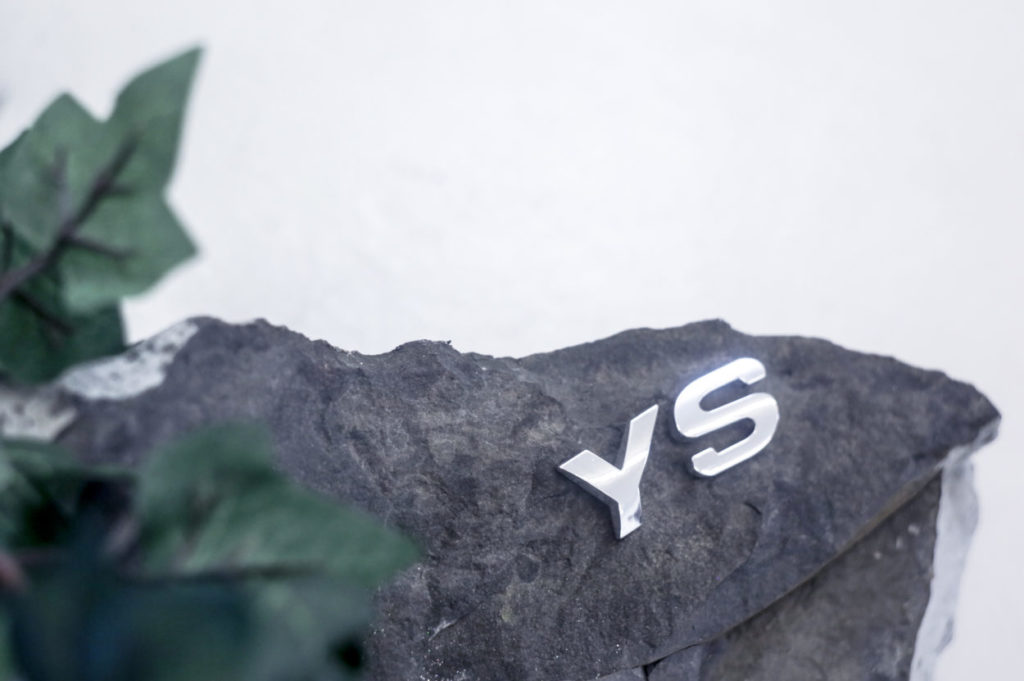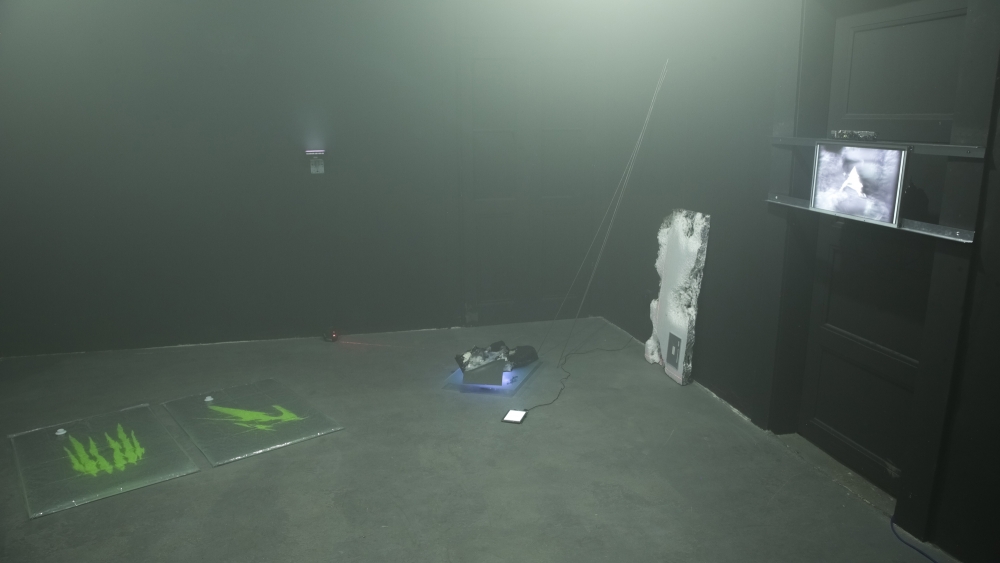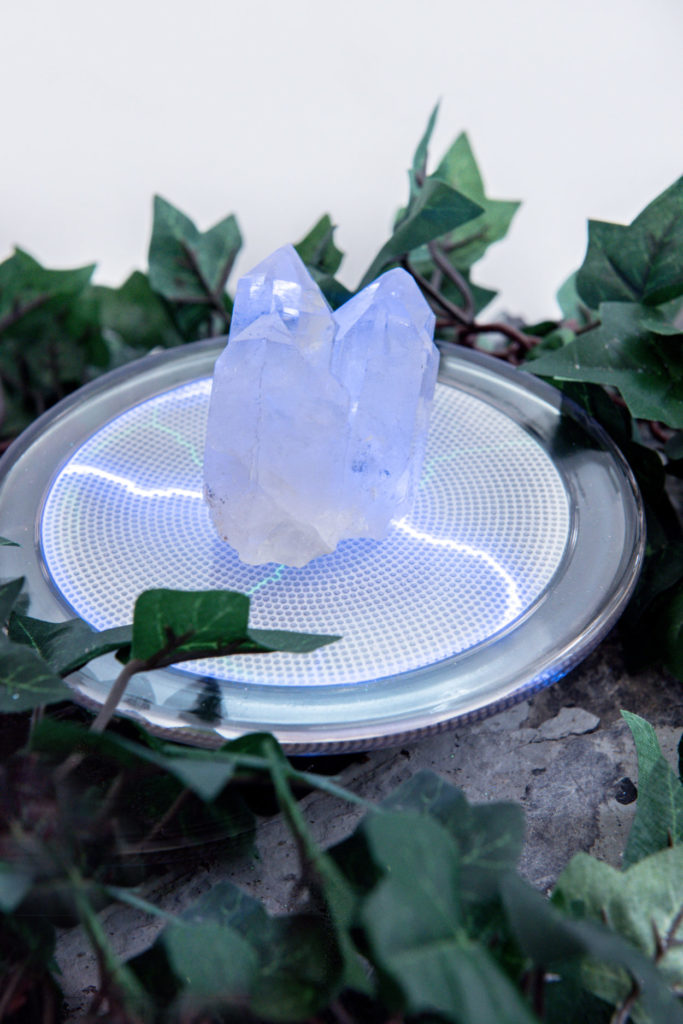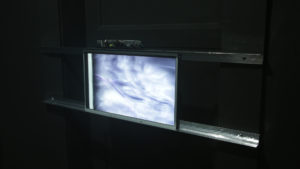“We’ve chosen to define our process like this because we have a kind of master plan that can be summed up as pushing the limits of what we know,” pronounce Sybil Montet de Doria and Simon Kounovsky about the reason they call their current collaboration an “artistic research program.” Communicating this together under their CORE.PAN project moniker via email, the two artists are preparing for their first show in the UK for the Future Fictions exhibition, curated by Mattia Giussani, at London’s Assembly Point. Opening on September 7 and running to October 14, the show also features work by Pakui Hardware, Joey Holder, and Viktor Timofeev, leaving them well placed in terms of artists circumventing the sometimes limiting bounds of rigour and rationalism by placing their interests in the sciences in an art context.

“We chose, at a special moment of our lives, to evolve as individuals through art because it seemed the best way to explore the mysterious potentials of reality,” write CORE.PAN about their model of a panpsychism practice that allows them to speculate on “the essence of beauty as a conceptual tension” across media, including research, sculpture and video. Following recent exhibitions KMS : Aftermath and ys mantic systems in Prague and Oslo, respectively, as well as producing a video for Liège-based producer ssaliva this year, the duo explore economics and its little-known relationship to the ancient pseudoscience of astrology and numerology. In doing so, CORE.PAN speaks to AQNB about everything from the market to Mother Nature; blockchains to new technologies, and its relationship to an elastic art practice in search of equilibrium.
** You’ve described yourselves as an ‘artistic research program,’ could you expand on this approach to making?
CORE.PAN: We’re both fascinated by science and mysticism, and how these two fields interconnect genuinely. It’s the main influence that leads us to creation. We didn’t go to art school, we chose at a special moment of our lives that we wanted to evolve as individuals through art because it seemed the best way to explore the mysterious potentials of reality. As artists, we can experiment, re-interpret and fictionalize complex concepts without any dogma.

One of our goals is to make collaborations with scientists on specific projects, like with AI [Artificial Intelligence] developers or quantum physicists. An artist’s residency that attracts us a lot is the one that is provided by the CERN in Geneva. You spend one year developing your research in one of the most mysterious and groundbreaking laboratories in the world. It’s really a dream we have and we’ll try it at one point.
** With the Future Fictions group show exploring automation and algorithm, what type of content are you engaging with at the moment that has been fed through this?
CP: Our outlook on these questions is pretty ambiguous. At one point we feel really concerned about the implications of these radical transformations on human society; at another, we think that it’s part of a global dynamic of progress that is beyond our will. So we tried to approach these subjects through two primordial and interconnected concepts: how a fundamental mechanism of society, which is trust, can be expanded through technology, and how every system is driven by cycles.
For Future Fictions we’ve chosen to investigate the blockchain system and crypto-currencies phenomenon; how smart-contracts — a secure, decentralized and complex agreement between two entities — can reinvent the way humans interact, without the need of a specific intermediary. Relying on an immutable and decentralized network to move assets or information can expand the concept of trust, allowing various kind of human constructions — economic markets, democratic elections, commerce platforms, the Internet of Things etcetera — to wipe human ego out of the process, and therefore avoid corruption or manipulation.

These blockchain-based technologies — like Ethereum, IOTA, Golem and many others — are an evolution of the Bitcoin protocol, and therefore is still very linked to notions of economic markets; but their future implications are going way beyond that. This research led us to analyse the concept of economical cycles, and how, surprisingly, in the highest spheres of market timing, the ancient discipline of astrology is considered a powerful tool to make good trades. One of the first theoreticians of market analysis, WD Gann, whose theories and techniques are studied at economics schools, was also a great astrologer and numerologist, and many of his techniques came from these disciplines applied to markets.
Ultimately, for us, the outcome of all theses concepts revolve around the idea of free will; an accurate balance between precise analysis and intuition. And that’s the structural basis of our piece for the show; the notion of equilibrium.
** What is the relationship between technology and ecology for you, is this something you are researching?
CP: It’s something that is an entire part of our state of mind. It goes naturally with the fact that we are globally trustful, regarding high-end tech and how it will shape our evolution as a species. We’re currently experiencing the urgency to learn from Nature — through biomimetic design — to build ultra-efficient, fluid and salutary technological solutions for a sustainable future, designed around feedback loops, rather than incoherent consumption. Take, for example, the researches around clean energy reactors based on mimicking the sun’s dynamics, like [fusion experiment] ITER, or these diamond batteries made from nuclear waste that could generate power for thousands of years.

The aftermath of our engineering errors will probably take the form of major environmental and social disasters in the near future but we have the intuition that at some crucial point we will globally angle our technological progress to enhance a symbiotic relationship with Nature. The main obstacles are lobbies and how they shape societal inertia through fear and degrading entertainment.
Finally, it’s a question of adaptation; eco-conscious technology is our only chance to survive on this planet. Otherwise, we’ll just disappear and something new will take our place, like dolphins or bacteria; or artificial conscious beings that have implemented in their source code that they can’t prosper if they destroy their own environment. In the end Nature will always win.
** Your installations often use ‘light’ as a material, could you talk a little about this medium you are drawn to?
CP: You know, ultimately we would like to design levitating, translucid, sentient biotopes, or re-create lightning storms inside precious silver caskets… For now, and in our perspective, light is the most supernatural material we can use, it’s so metamorphic. It’s a direct evocation of our ideals in terms of ethereality and intensensity. It’s at the same time, totally spectral and hyper-structuring. Furthermore, lighting can determine a lot about an object — its density, its weight, its dynamics — but also expand the atmospheric qualities of an entire space. For us, light is at the same time a material and a subject.

** Your work often looks at relationships that form between disparate entities, what has been the most interesting intersection of late for you, and what birthed from it?
CP: This is a pretty subjective view because for us there are no real disparities between the concepts we explore. Let’s say, it’s more a question of displaying some deep connections that intrinsically exist among ideas or fields of research. And that we’re involved in breaking some conceptual barriers that we consider illusory or outdated, like what is estimated rational and what is not. We went to an international drift contest in the mountains today. It was super poetic and profoundly archaic at the same time. That’s the kind of intersection that can inspire us a lot.**















